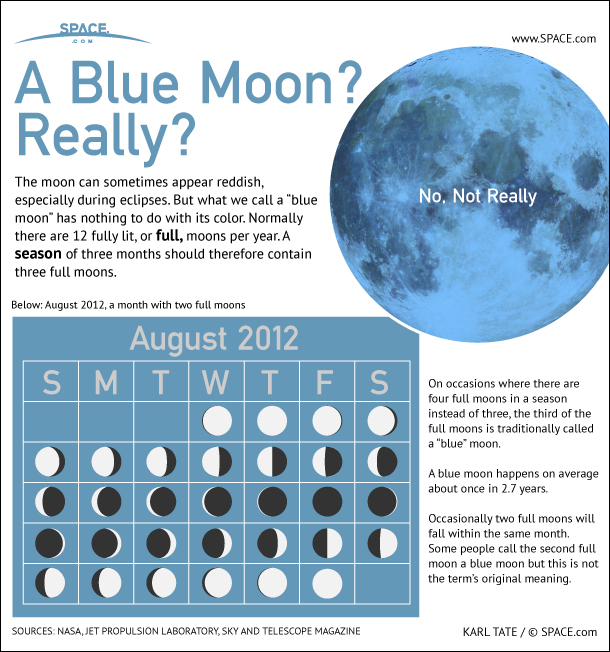Once in a Blue Moon Event Is Not Really Blue (Infographic)

The moon can sometimes appear reddish, especially during eclipses. But what we call a "Blue Moon" has nothing to do with its color. Normally there are 12 fully lit, or full, moons per year. A season of three months should therefore contain three full moons.
Thought to be called "blue" after an old English term meaning "betrayer," a Blue Moon is an extra full moon that occurs in that span, due to a quirk of the calendar.
On occasions where there are four full moons in a season instead of three, the third of the full moons is traditionally called a Blue Moon. A Blue Moon happens on average about once every 2.7 years.
Occasionally two full moons will fall within the same month. The second full moon is also often called a Blue Moon, but this is not the term's original meaning.
The moon can actually appear blue under certain circumstances, such as when ash is present in the atmosphere from fires or volcanic eruptions. This type of Blue Moon cannot be predicted in advance, however.
Join our Space Forums to keep talking space on the latest missions, night sky and more! And if you have a news tip, correction or comment, let us know at: community@space.com.
Get the Space.com Newsletter
Breaking space news, the latest updates on rocket launches, skywatching events and more!

Karl's association with Space.com goes back to 2000, when he was hired to produce interactive Flash graphics. From 2010 to 2016, Karl worked as an infographics specialist across all editorial properties of Purch (formerly known as TechMediaNetwork). Before joining Space.com, Karl spent 11 years at the New York headquarters of The Associated Press, creating news graphics for use around the world in newspapers and on the web. He has a degree in graphic design from Louisiana State University and now works as a freelance graphic designer in New York City.
